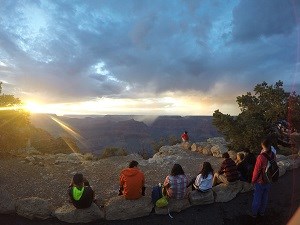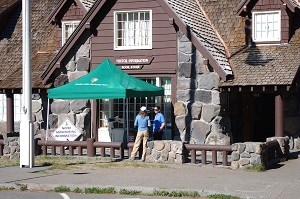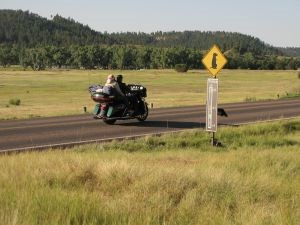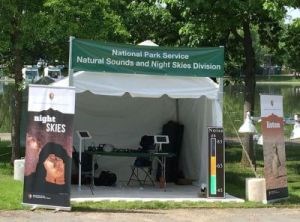DRAFT: Preliminary internal document in review/ Do not cite
This is an internal website intended to capture current approaches and knowledge base from the Natural Sounds & Night Skies Division in order to provide guidance to the field in an easy, user friendly format. It is still under development and this version was made available solely for this internal review. Following review, and prior to formal internal agency vetting, pages will be inactivated in order to incorporate input.
7. Education and Outreach

7.1 Interpretive and Educational Resources
NSNSD has collaborated with parks and partners to create soundscape activities, curriculum, and interpretive programs for use in parks. NSNSD also created The Power of Sound: Interpretive Handbook [PDF] to help park interpretive staff communicate soundscapes to visitors. Natural sounds libraries like NSNSD's, XenoCanto, Watkins Marine Mammal Sound Database, or the Macaulay Library may offer recordings that can be used in interpretive programs.
Several parks have web pages and videos that help visitors explore sounds as a natural resource.
Web Pages
Everglades National Park
Denali National Park and Preserve
Golden Gate National Recreation Area
Herbert Hoover National Historic Site
Lewis and Clark National Historical Park
Rocky Mountain National Park
Shenandoah National Park
Yellowstone National Park
Yosemite National Park
Videos
Great Sand Dunes National Park
Olympic National Park
Rocky Mountain National Park
Shenandoah National Park
Zion National Park
Teacher Resources
Glacier Bay National Park and Preserve

7.2 Visitor Education Reduces Park Noise
Muir Woods NM
The power of focused visitor education to reduce park noise is exemplified by the success of a program implemented at Muir Woods NM. In order to sensitize visitors to human-caused noise and encourage them to reduce the noise they generate, Muir Woods staff established a Quiet Zone at Cathedral Grove in 2007. Strategically placed signs ask visitors to turn off cell phones, walk quietly, and talk in a lower voice. Within the Quiet Zone, sound levels have dropped measurably, giving visitors a greater opportunity to hear the natural sounds of Cathedral Grove.

Done safely, responsibly, and respectfully, riding a motorcycle through a national park can be a wonderful way to experience our nation's natural and cultural heritage. However, motorcycles and other vehicles can have significant impacts on wildlife and other park visitors. NSNSD has launched an outreach campaign called "Ride Respectfully" to educate park visitors about the effects of motorized vehicles in national parks. Contact NSNSD to request these resources.

Park visitors can have the opportunity to learn more about the science of sound in national parks at the NSNSD interpretive booth. Printed materials, an interactive iPad display with educational videos, and games for all ages encourage visitors to listen to the sounds of their national parks.
Last updated: August 27, 2024
